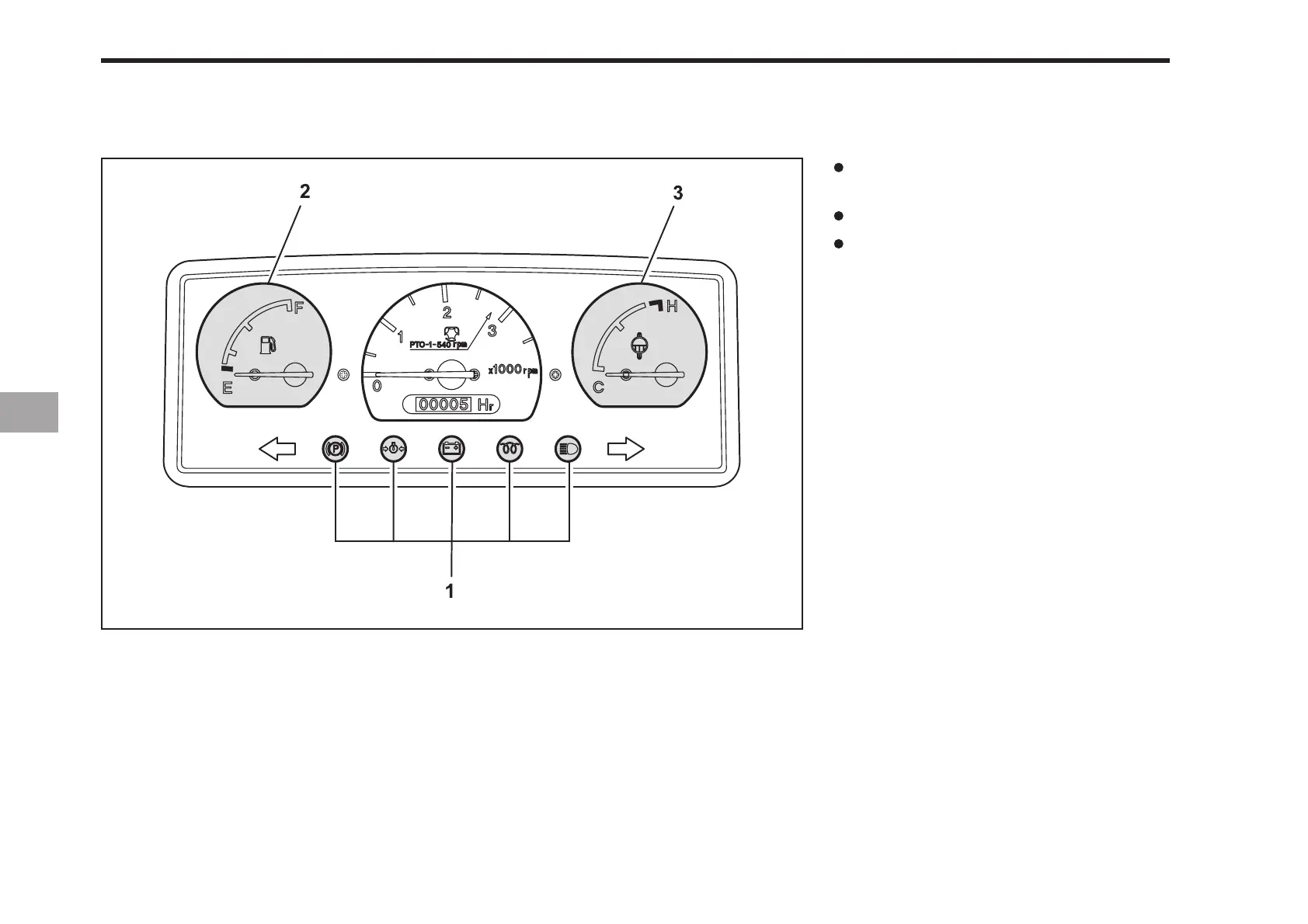
 Loading...
Loading...
Do you have a question about the Kioti CK20 and is the answer not in the manual?
| Engine Type | Diesel |
|---|---|
| Transmission | Hydrostatic |
| Drive | 4WD |
| Hydraulic Remotes | 1 |
| 3-Point Hitch | Category 1 |
| Fuel Capacity | 6.6 gal |
Essential safety guidelines before starting tractor operation.
Instructions and warnings for safe tractor operation while driving.
Procedures and precautions for safely parking the tractor.
Guidelines for safely operating the Power Take-Off (PTO) system.
Safety measures to be taken during tractor servicing and maintenance.
Identification and location of various safety labels on the tractor.
Guidelines for using implements with the tractor to ensure safe operation.
Identification of dashboard instruments, switches, and hand-operated controls.
Location and function of all foot pedals and hand-operated levers.
Routine checks to ensure the tractor is safe and ready for operation.
Step-by-step procedure for safely starting the tractor engine.
Correct procedure for shutting down the tractor's engine.
Safe instructions for jump-starting a tractor with a dead battery.
Precautions for handling a new tractor during its initial use period.
Instructions for folding and unfolding the Roll-Over Protective Structure (ROPS).
Initial steps and adjustments before operating the tractor.
Proper use and importance of the seat belt when the ROPS is installed.
How to operate headlights, hazard lights, and turn signals.
Procedures for checking and ensuring proper brake pedal function.
How to choose and shift between different travel speeds and ranges.
Proper engagement and usage of the front-wheel drive system.
Procedures for safely stopping the tractor and its operations.
What to monitor while driving and when to stop the engine immediately.
Safe procedures for parking the tractor and using the parking brake.
Adjustments for operator comfort and safety of the seat.
When and how to use the differential lock for improved traction.
Safety precautions for operating on inclines and uneven surfaces.
Instructions for engaging and using the Power Take-Off (PTO) system.
Preparations and procedures for attaching implements to the three-point hitch.
Safety guidelines for connecting and disconnecting implements.
Adjusting the drawbar length and understanding drawbar load limits.
Operation of the hydraulic control lever for the three-point hitch.
Adjusting the maximum height for implement lowering.
Using external hydraulic connections for implements.
Operation of the joystick valve for auxiliary hydraulic functions.
Procedures for connecting and disconnecting hydraulic couplers.
Operation of the remote control valve lever for hydraulic implements.
Guide for setting up hydraulics based on implement and soil conditions.
Information on tire inflation pressure and safe mounting practices.
Adjusting front and rear wheel tread widths for stability.
Guidelines for adding front and rear ballast for stability and traction.
Specifications for tractor traveling speeds at rated engine RPM.
Schedule of maintenance tasks based on operating hours or time.
Recommended lubricants and capacities for various tractor components.
Instructions for accessing the tractor's engine compartment.
Detailed daily inspection items before operating the tractor.
Maintenance tasks to be performed every 50 operating hours.
Maintenance tasks to be performed every 100 operating hours.
Maintenance tasks to be performed every 200 operating hours.
Maintenance tasks to be performed every 400 operating hours.
Maintenance tasks to be performed every 600 operating hours.
Maintenance tasks to be performed every 800 operating hours.
Maintenance tasks to be performed annually.
Maintenance tasks to be performed every two years.
Maintenance procedures that are not time-based but condition-dependent.
Procedures for storing the tractor for extended periods.
Steps to prepare the tractor for use after storage.
Common engine problems, their causes, and corrective actions.